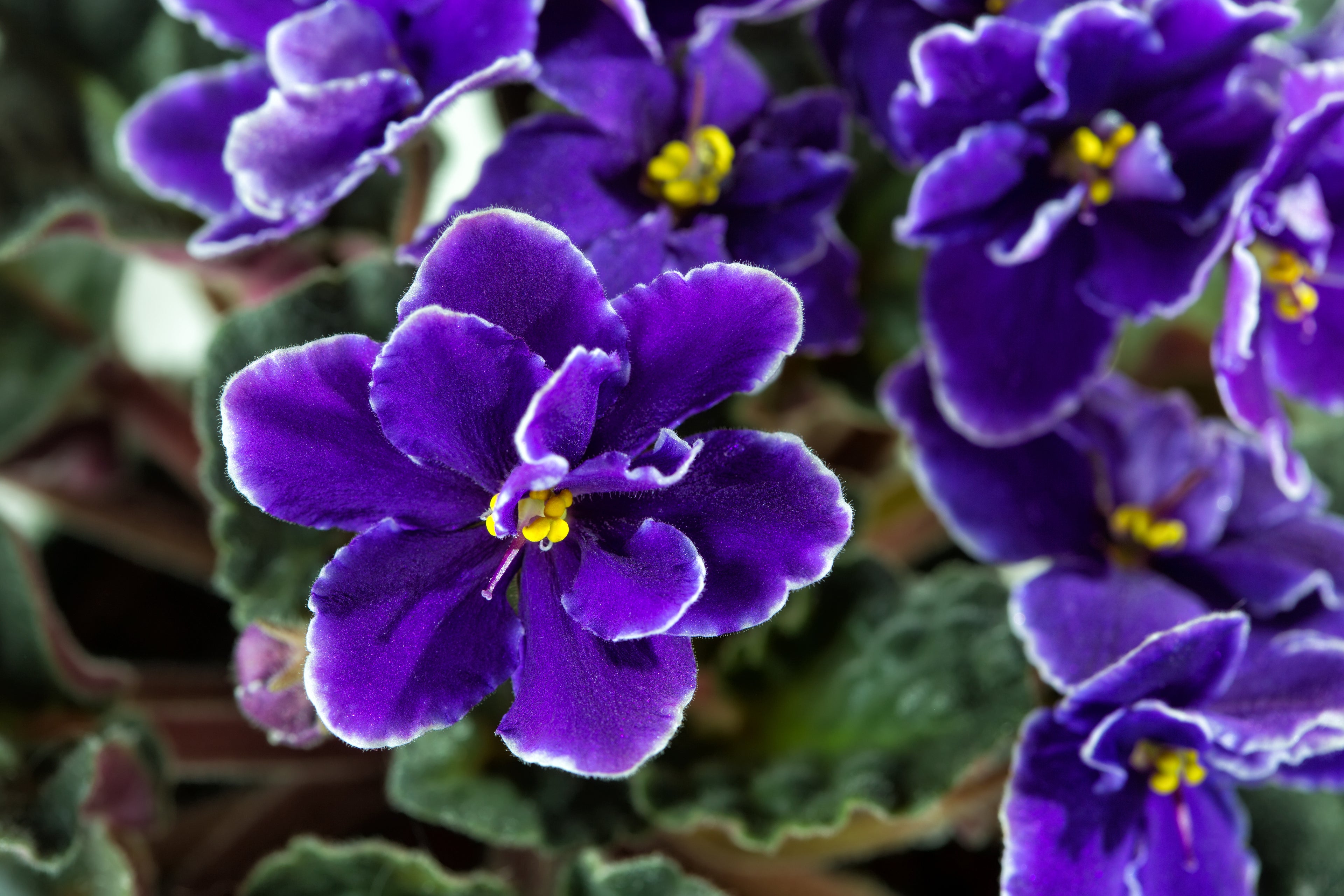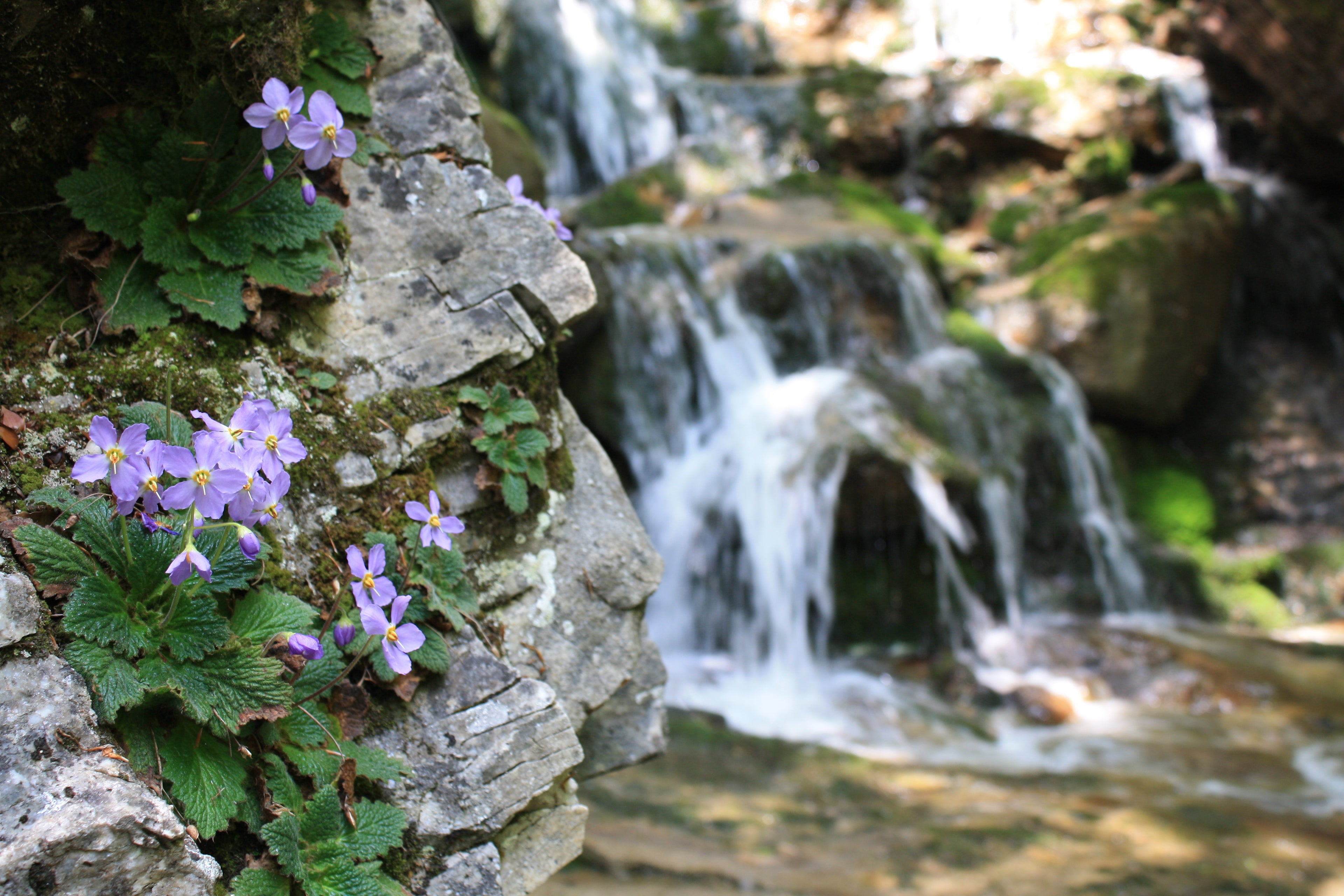African Violet Care Overview
-
Sunlight
Bright indirect
-
Soil
Well-draining, rich
-
Watering
Allowed to dry between watering.
-
Temperature
65-80°F
-
Humidity
Dry tolerant. 80% preferred
-
Toxic
Toxic to people and pets
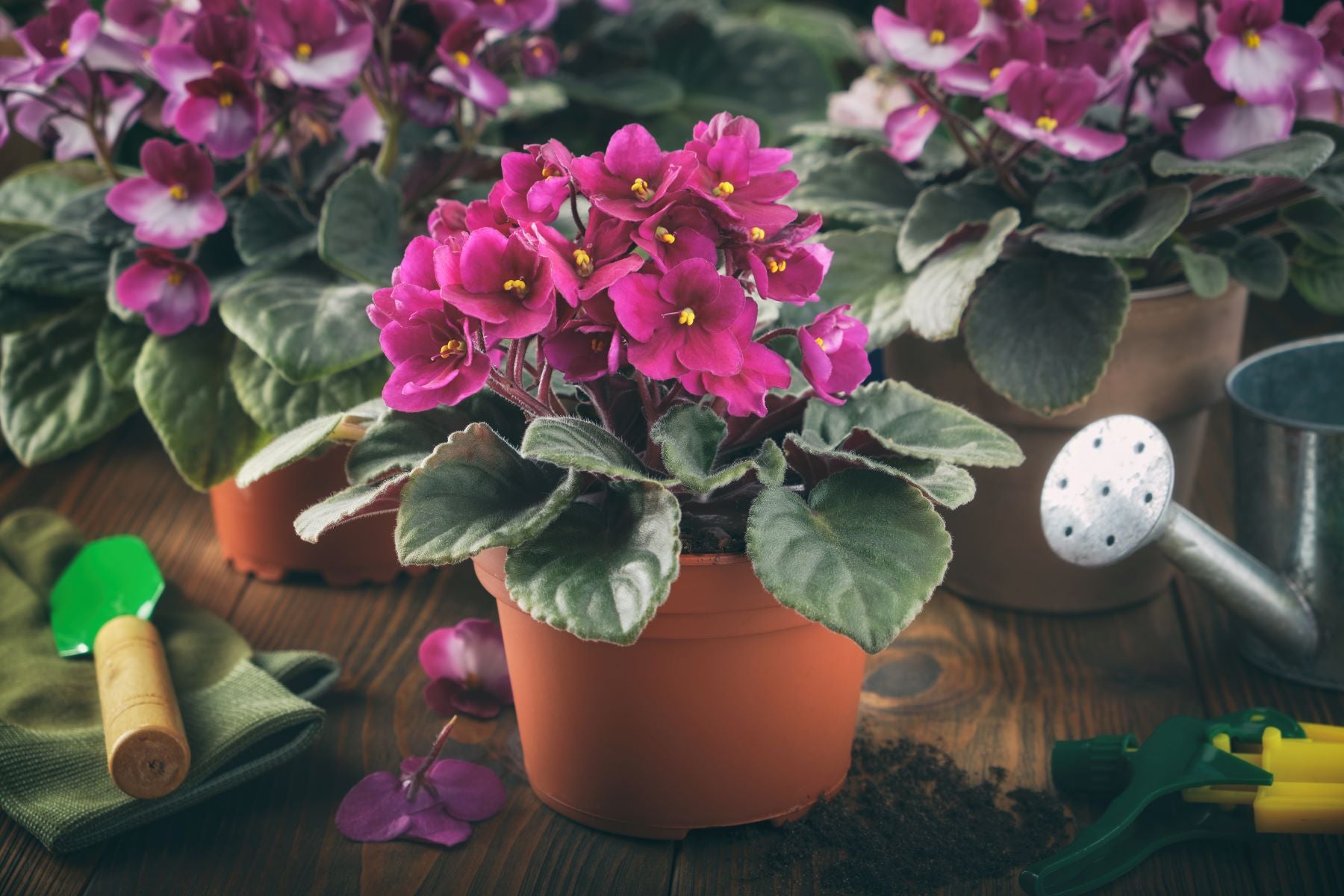
Colors and Cultivars
Since being discovered in 1982, African Violet enthusiasts have hybridized the original species producing more than 16,000 cultivars that appear in wide varieties of foliage with blue, purple, pink, or white clustered blooms (2).
These plants are so popular that societies such as the African Violet Society of America dedicate themselves to the preservation, education, and community surrounding them.
African Violet Care Requirements
African Violets are among the easiest and most rewarding of any houseplants to grow because once their basic requirements are met, they require little attention to keep looking fabulous. Follow the below recommendations to create a suitable environment for your African Violets.
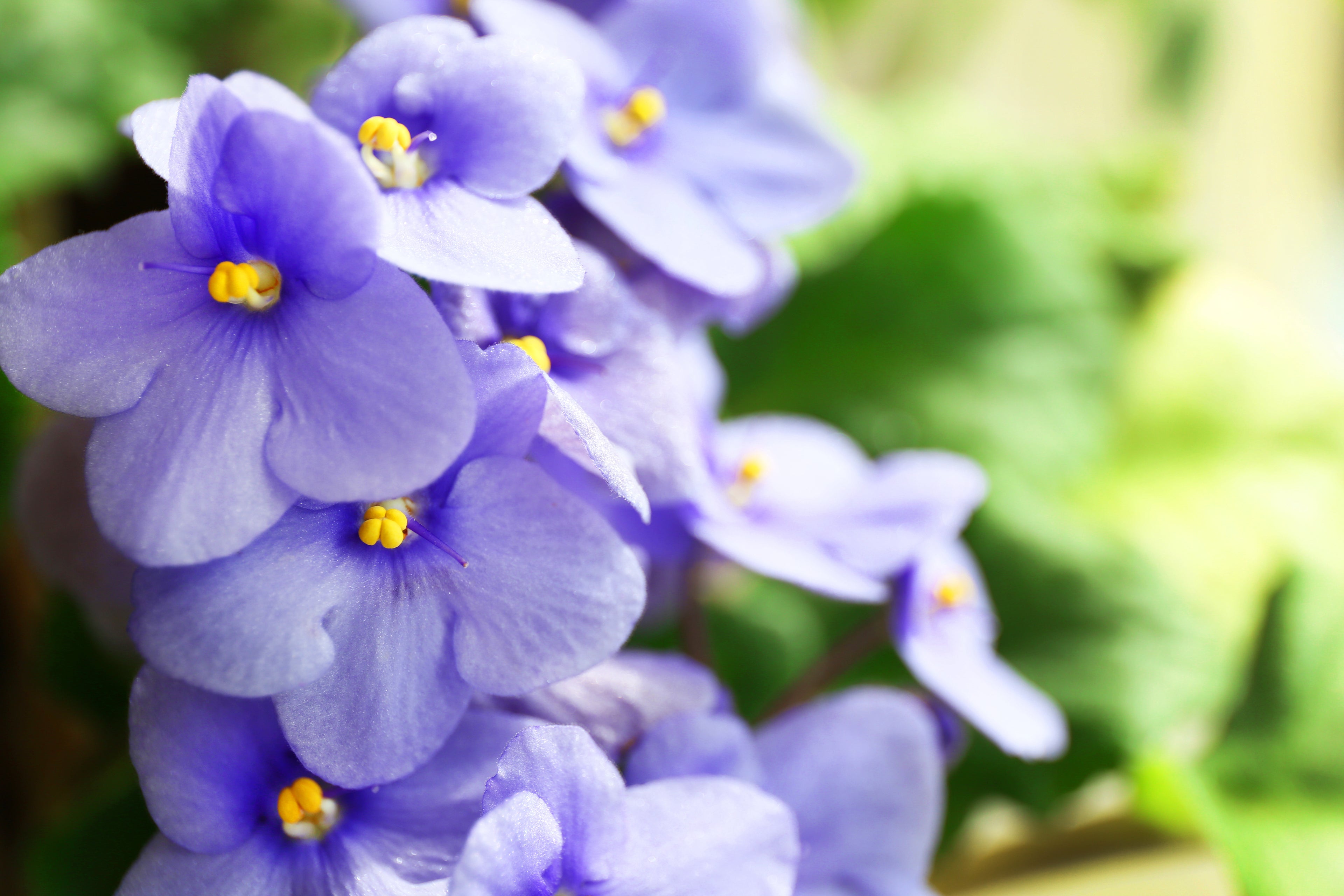
Lighting
Getting lighting correct is the most challenging part of growing African Violets because they require bright, indirect exposure for around 10 hours a day. African Violets will not bloom unless they are given proper light. Avoid direct sunlight because it will burn the leaves and wilt the flower (1).
Artificial lighting such as LEDs and fluorescent grow bulbs are popular with African Violets because they help maintain year-round blooming.
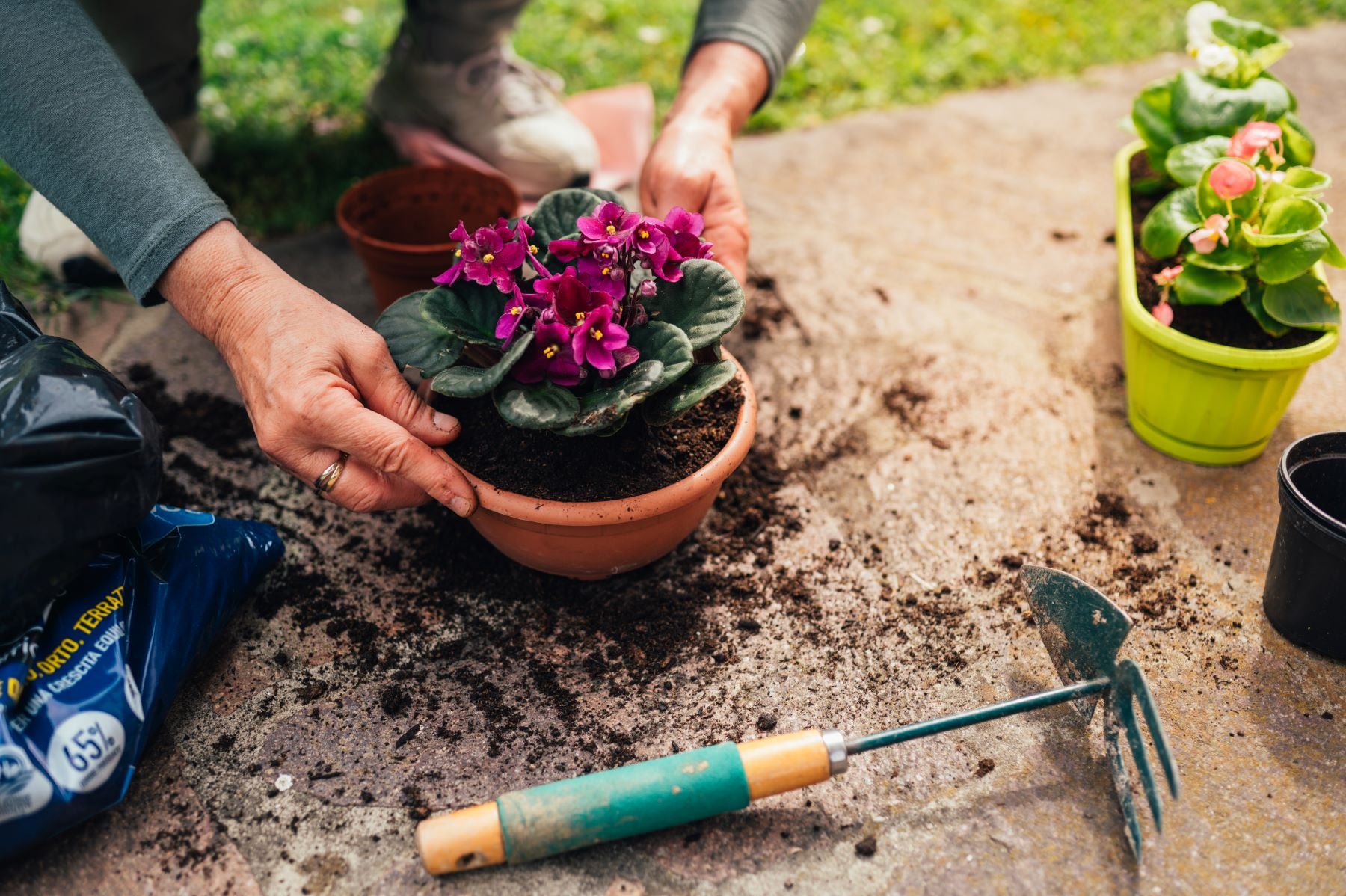
Soil
African Violets grow best in organically rich soil that is porous, aerating, and slightly acidic. Commercially sold soil mixes may be used as they obtain proper nutrients, but custom substrates may better suit your African Violet and environment. For example, consider the following mixture from the Missouri Botanical Garden Organization:
African Violet Soil Mix:
1 part peat moss
1 part garden soil
1 part perlite/vermiculite
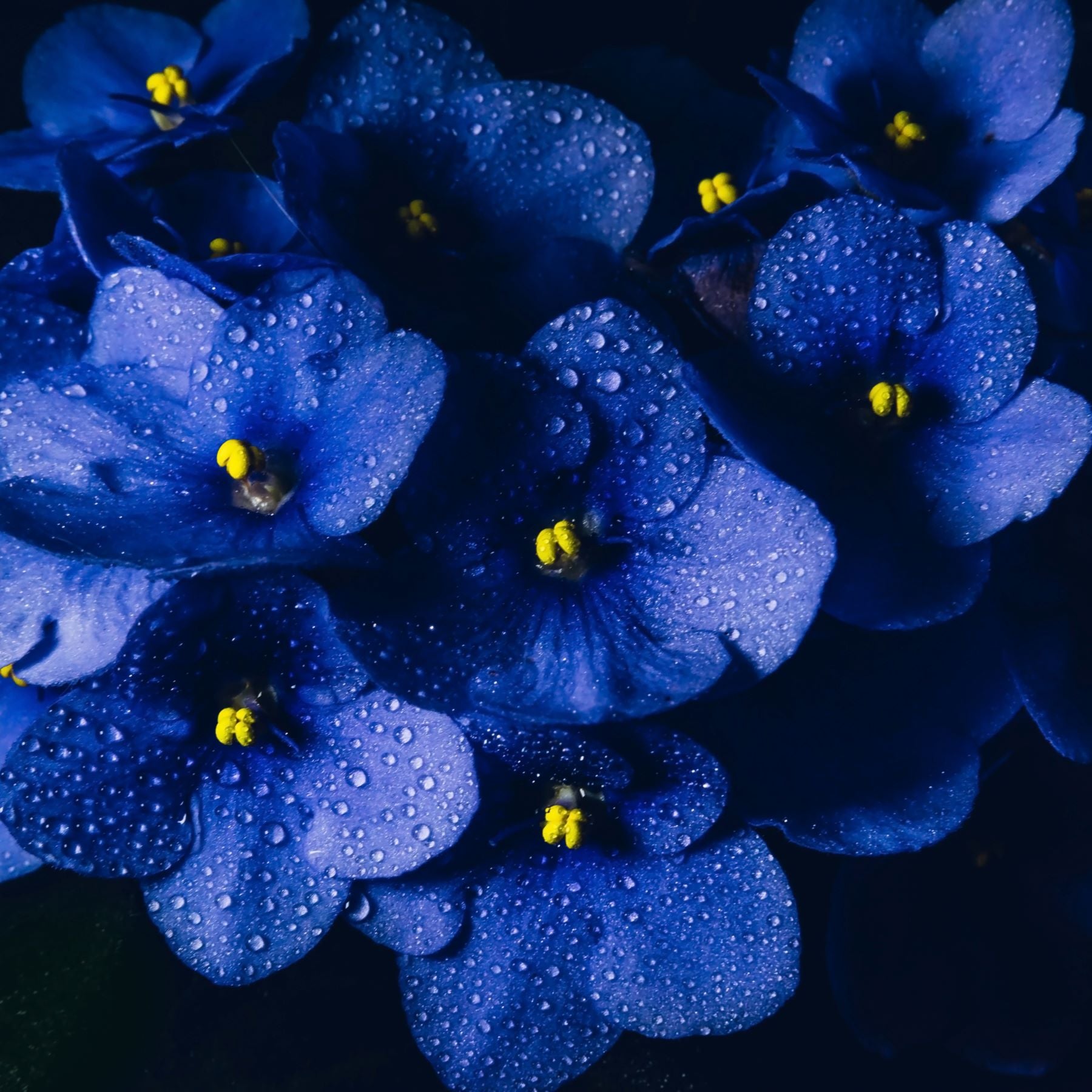
Watering
African Violets like bottom watering because it avoids getting water on their sensitive crown and stems. Soil should be throughly watered, then allowed to dry in between waterings.
I water my African Violets with distilled water because more sensitive plants have had trouble with the minerals. However, many people use tap water without consequence.
Fine hairs on the leaves of the plant help redirect water away from the central crown of the plant as it may cause rot (1).
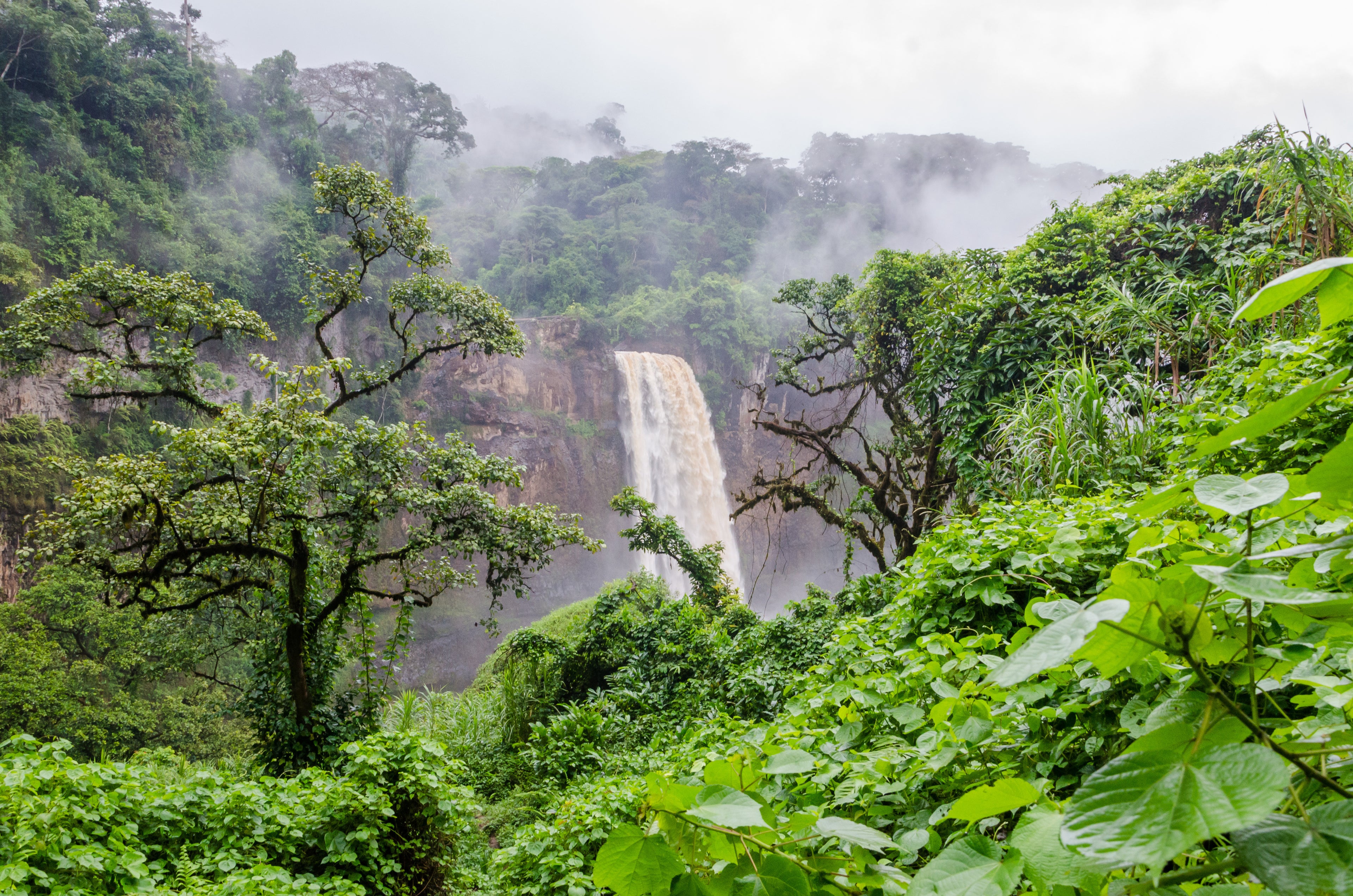
Humidity
African Violets prefer humidity levels at about 80% and temptures between 65°F and 80°F as these are standard in their native climate. Fortunately for us, they also tolerate less-than-perfect humidity conditions. Adding humidifiers helps increase atmospheric humidity but avoid misting the leaves as this may cause spotting (8).
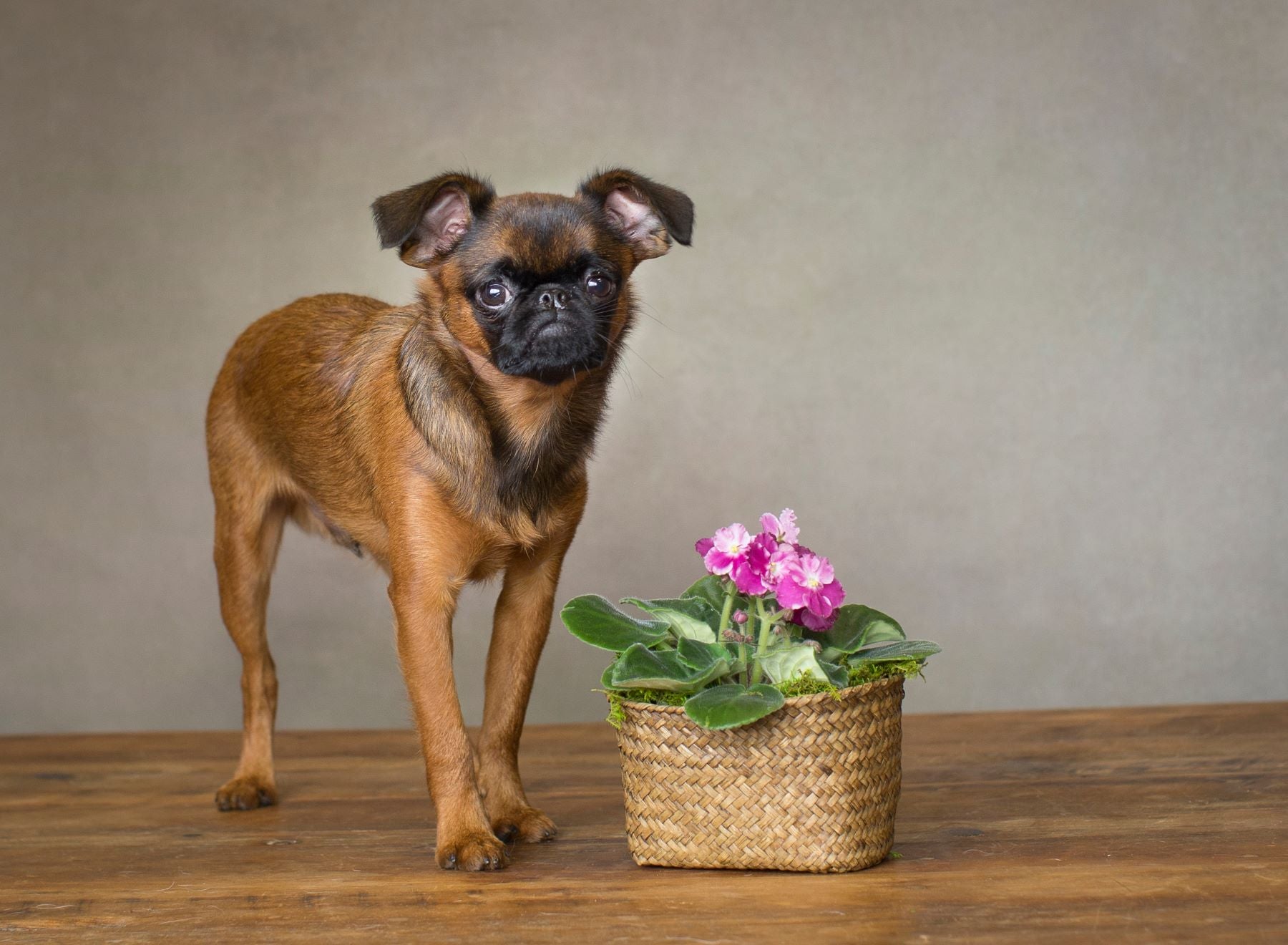
Toxicity
According to the ASPCA, African Violets are non-toxic to dogs, cats, and humans. However, I would not suggest eating one because, unlike other violets, they are not considered edible.
Fertilization
Fertilizing your African Violet can help it continue to bloom and grow especially if it is missing nutrients in it's container.
Typically, fertilizers formulated for flowering plants are higher in phosphorus than nitrogen, with a common analysis ratio of 8-14-9. The African Violet Society of America advises against using fertilizers containing urea as the nitrogen source, as it can be harmful to African violets, causing root damage and burning (7).
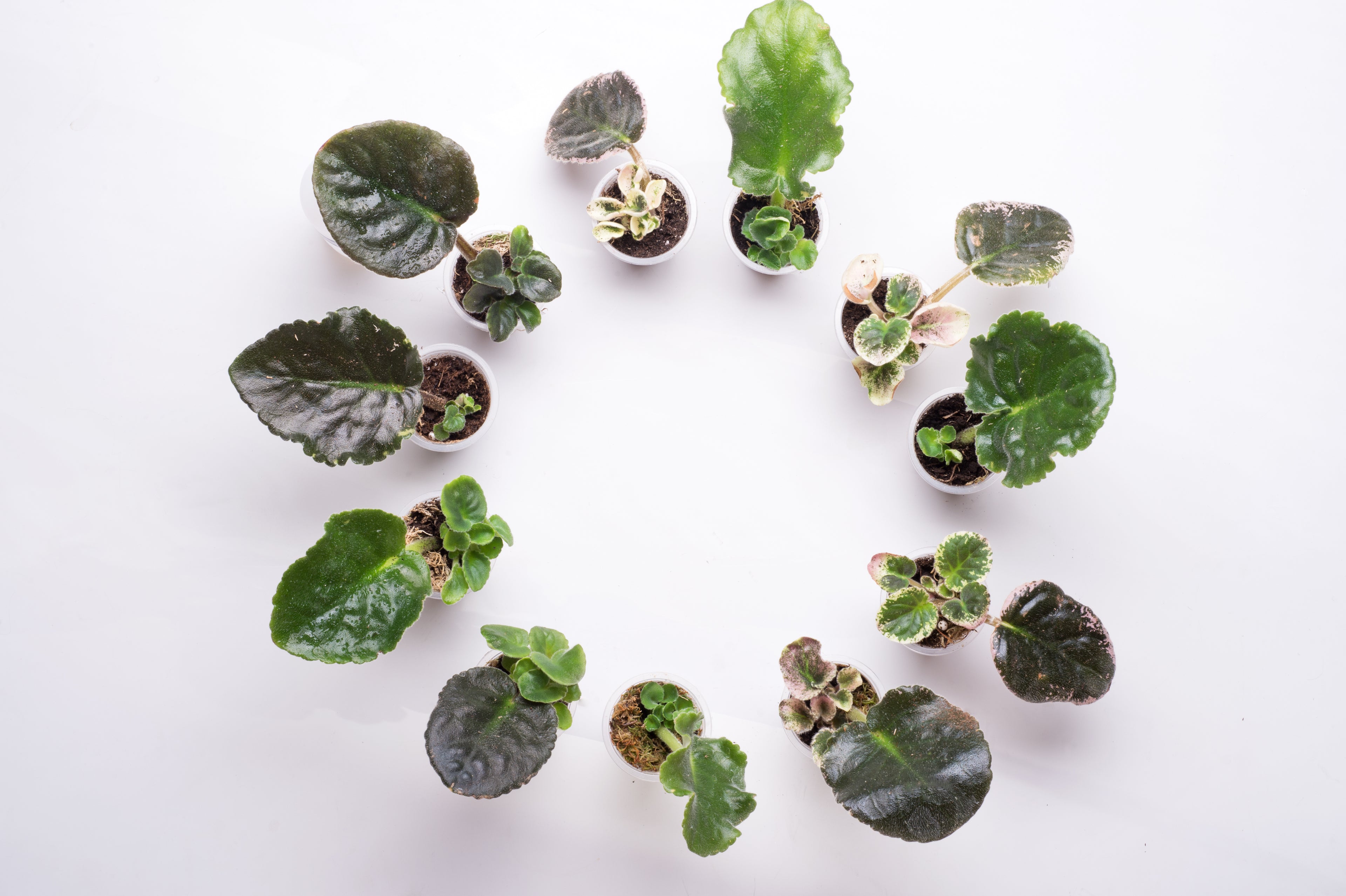
African Violet Propagation
One of the reasons African Violets are beloved houseplants is their relative ease of propagation. Leaf cuttings, choose a healthy leaf and cut it with a sharp knife, leaving 1 to 1½ inches of the leaf stem attached. Insert the petiole into a moistened 50:50 mix of vermiculite and coarse sand at a 45-degree angle, and firm the medium around it. Cover the cuttings with a clear plastic bag and set them in a bright area. After 3 to 4 weeks, roots should form, and new leaves will appear in about 6 to 8 weeks. Separate the multiple plants that grow from each petiole by carefully cutting or pulling them apart, and pot them individually in well-draining soil (5).
Common Problems with African Violets
Luckily for us, African Violets visually communicate when they are in distress which helps us diagnose their ailments, and healthy, well-maintained plants are less likely to develop disease and fungus. Below is a graph of some of the common conditions of African Violets. Always be mindful of visual cues from plants, such as wilting or discoloration. And be sure to sterilize gardening shears with vinegar or rubbing alcohol to help prevent infections and disease.
Other African Violet Problems
-
Crown and stem rot-The plant will look sickly in the center, likely from overwatering.
Burnt or dry leaf tips- Lack of moisture
Brown spots on leaves- leaf scorch from sunburn
Curling leaves- The light levels are too low
-
Dark leaves and leggy- Not enough sunlight
light green/bleached- Too much sunlight
Mushy stems/leaves- root rot from overwatering
I hope this article will help you bloom! African Violets are rewarding and relatively easy to maintain. At Happy Roots, we create double-lined and bottom watering compatible plant pots that are an excellent choice for African Violets. Happy Gardening!
-Rikki
Works Cited
1. African Violet Resource Center - How to care for African Violets
2. African Violet Society of America - Learn Violets 101
3. Almanac - African Violets
4. ASPCA - African Violet
5. Iowa State University - How can I propagate an African violet?
6. Missouri Botanical Garden - Gardening Help FAQs
7. PennState Extension - Why Isn't My African Violet Flowering?
8. Smithsonian Gardens - Care of African Violets
9. The Gesneriad Reference Web - The African Violet by Dr. Jeff Smith
Images Cited
-
All images are owned or licensed content.
1. African Violet (Saintpaulia) By Sergey Lavrentev
2. Wild Saintpaulia By Patrik Stedrak
3. Potted Saintpaulia violet flowers. Planting potted flowers and garden tools for pot plants on wooden board. By chamillew
4. Beautiful violet plant with blue flowers, close up By Africa Studio
5. The hands of the transplant woman plant a in a new pot. botany at home. African violet By filippo
6. violets By sokol
7. Beautiful hidden Ekom Waterfall deep in the tropical rain forest of Cameroon, Africa By Fabian
-
8. Small Brussels Griffon, puppy poses with an african violet in the studio with a tan background By TBergphoto
9. saintpaulia (african violets) cutting with sprouts around white background. presentation different variations at windowsill. By anakondasp
10. Violets By SASHA
11. Yellow and green leaves of violet. Houseplant with yellow leaves. A sick houseplant By Natalia
12. Symptoms of powdery mildew pathogen infection on petunia x hybrida. By Anna
13. Dead dry plant of African violet (Saintpaulia ionantha) in pot on white background By Nadya So
14. African Violet in Happy Roots Plant Pot by Happy Roots

